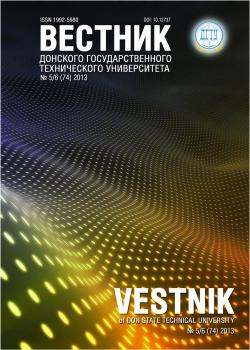The design and training scheme for the artificial neural network is considered. An expert system of evaluating a craftsman’s motor skills stability while working on the welder simulator is based on this technique. It is assumed that the weld joint quality depends directly on the welding behavior stability. While the stability of the manual arc and mechanized welding depends on the welder’s motor skills. It is proposed to use an expert system to deter-mine the stability criterion of the welding process. A step by step design of the artificial neural network architec-ture considering the specific weld formation is described. It is shown that the application of artificial neural net-works based on the expert system allows evaluating the welder’s job stability. A training technique which shortens the time and reduces the number of experiments without loss of the data adequacy and the expert system train-ing quality is described. When creating a database, the experimental results presented as "Quality domain" that connects the welder’s motor actions and the fillet joints defects are used
weld joint, artificial neural networks, artificial neural network training, weld defects, expert system, welding pro-cess stability, analytical methods
Введение. Получение качественного сварного соединения зависит от стабильности работы сварщика при выполнении сварных соединений. Стабильность поддержания параметров процесса сварки, указанных в технической карте, гарантирует качественное сварное соединение. Предлагается проводить оценку стабильности с помощью экспертной системы, основанной на искусственной нейронной сети (ИНС) [1]. ИНС позволяет выявлять многофакторную зависимость между входными параметрами (ток, напряжение, скорость сварки, отклонение электрода от оси сварного шва) и качеством формирования геометрических параметров сварного соединения. Учитывая это, можно прогнозировать появление дефекта на основе анализа динамики изменений параметров протекания процесса сварки [2], [3], [4], [5]. Авторы предлагают методику проектирования и обучения ИНС. Известно, что ИНС необходимо обучать на конкретных данных предметной области. В связи с этим в работе использован метод оценки стабильности моторных навыков сварщика, основанный на предложенном Ю. Г. Людмирским понятии «область качества» [6]. Это позволило без потери качества обучить ИНС при небольшом количестве опытов.
1. Haykin, S. Neural networks. A Comprehensive Foundation. 2nd edition. Ontario : McMaster Universi-ty Hamilton, Prentice Hall, 2006, 1103 p.
2. Skachkov, I. O., et al. K voprosu primeneniya neyronnykh setey dlya kontrolya kachestva svarnykh soedineniy pri podvodnoy svarke. [On application of neural networks for quality control of welded joints in un-derwater welding.] Avtomaticheskaya svarka, 2006, no. 6, pp. 27-31 (in Russian).
3. Gladkov, E. A., Gavrilov, A. I. Imitatsionnoe modelirovanie lazernoy svarki s glubokim proplavleniem s ispol´zovaniem neyrosetevykh modeley. [Simulation modeling of laser welding with deep penetration using neural network models.] Svarka i diagnostika, 2009, no. 1, pp. 7-12 (in Russian).
4. Gavrilov, A. I., Yevdokimov, P. V. Opredelenie optimal´nykh parametrov neyronnoy seti pri postroenii matematicheskikh modeley tekhnologicheskikh protsessov. [Neural network optimum parameters determining under industrial process mathematical model construction.] Vestnik of ISPEU, 2007, no. 4, pp. 87-90 (in Russian).
5. Shvarts, М. V. Razrabotka algoritma adaptatsii tekhnologicheskikh parametrov svarki k izmeneniyu geometrii styka pri svarke kornevogo sloya shva. [Development of welding parameters adaptation algorithm to change joint geometry under root pass welding.] Chetvertaya Vserossiyskaya nauchno-tekhnicheskaya konfer-entsiya «Studencheskaya vesna 2011: Mashinostroitel´nye tekhnologii». [IVth All-Russian Sci.-Tech. Conf. “Student Spring 2011: Machine-building technologies”. Available at: http://studvesna.qform3d.ru/?go=articles&;id=336 (accessed: 08.08.2014) (in Russian).
6. Lyudmirskiy, Y. G. Povyshenie effektivnosti primeneniya neadaptivnykh robotov na osnove veroyatnostno-statisticheskogo modelirovaniya protsessov sborki i svarki malozhestkikh prostranstvennykh konstruktsiy: dis. d-ra tekhn. nauk. [Improving the effectiveness of non-adaptive robots based on probabilistic and statistical modeling of assembly and welding of low rigid spatial structures: Dr.tech.sci.diss.] Rostov-on-Don, 2002, 300 p. (in Russian).
7. Solovyev, A. N. Opredelenie uprugikh i dissipativnykh svoystv materialov s pomoshch´yu sochetani-ya metoda konechnykh elementov i kompleksnoznachnykh iskusstvennykh neyronnykh setey. [Elastic and dis-sipative material properties determination using combination of FEM and complex artificial neural networks.] Vestnik of DSTU, 2014, no. 2, pp. 77-83 (in Russian).
8. Fatkhi, V. А., Marshakov, D. V., Galushka, V. V. Issledovanie modeley defektov iskusstvennykh ney-ronnykh setey. [Artificial neural network fault model study.] Vestnik of DSTU, 2012, no. 3, pp. 65-71 (in Rus-sian).
9. Wilson, B. The Machine Learning Dictionary. Available at: http:// www.cse.unsw.edu.au/~billw/mldict.html (accessed: 08.08.2014).
10. Gorban, А. N. Obuchenie neyronnykh setey. [Neural network training.] Moscow : ParaGraf, 1990, 159 p. (in Russian).





